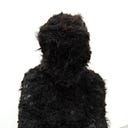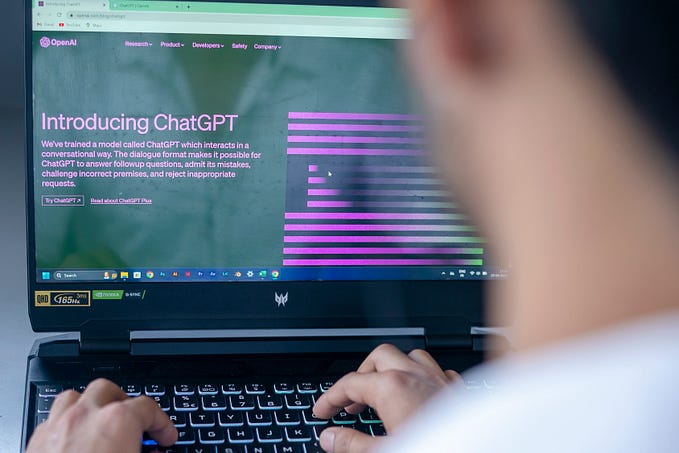These tombs and graves of art*
Dominic Zinampan

I.
December 12, 2016. TAGUM CITY. Security forces of the Lapanday Foods Corporation (LFC) open fire on farmers who by then had been protesting for days. Seven people are wounded.
Many of the protestors are members of the Madaum Agrarian Reform Beneficiaries Association Inc. (MARBAI) and were “reclaiming 145 hectares of land awarded to them but was landgrabbed by Lapanday Foods Corporation.”[1] A fact finding mission report uploaded by Unyon ng Manggagawa sa Agrikultura (UMA) narrates how less than two hours after the shooting, “Lapanday sprayed chemicals and pesticides within the premises of MARBAI utilizing a small aircraft” forcing almost 300 members and supporters to throw away their food and water and seek shelter in a chapel. The report also states that two days later, security forces again opened fire, injuring more protestors.
II.
January 7, 2017. MAKATI CITY. Silverlens opens the group show Translación, inaugurating their new and bigger space at the Lapanday Center.
The show was a momentous occasion, announced months in advance and featured twenty-two artists from the gallery’s roster. However, the events that transpired less than a month prior made many aware of the gallery’s ties to LFC, which the Facebook page LapanDie: Artwashing Feudalism, Imperialism, Bureaucrat Capitalism enumerated in a post dated June 5, 2017:
- Silverlens co-founder Isa Lorenzo is “the youngest scion of the Lorenzo landlord family of Mindanao”
- Her sister, LFC Chair and CEO Regina Lorenzo, is on the gallery’s board of directors
- Other corporations also hosted within the Chino Roces Ext. compound are chaired by their brother Martin Lorenzo who also “owns — along with the Cojuangco-Aquinos — Central Azucarera de Tarlac and Agrikulto, Inc., the primary employers of despotically exploited sacadas waged PHP9.50 for every day’s worth of hard labor”
III.
February 25, 2017. Art collective Windang Aesthetics Labor Army (WALA) opens the online group show SLAVERLANDS: Saging Lang Ang May Puso.
Positioning Philippine contemporary art as “the cosmetic surgeon to the face of late capitalism,” the project aims to expose how:
a supposedly humanistic and cultural endeavor is made possible primarily by barbaric, regressive, and ultimately destructive policies and practices. There is blood that gets washed out for every pretty picture in an exhibition space, unseen and unavoidable. And there is an invisible elephant behind all of this that sucks the life out from rural peripheries and comes prancing with pizzazz to glitzy art centers.[2]
The collective invited around seventeen artists — using pseudonyms ranging from puns to portmanteaus, QWERTY gibberish to bastardized names of canonical figures — to “[place] this invisible elephant at the center of our scrutiny” through works that focus specifically on the crimes committed by LFC, Central Azucarera de Tarlac (CAT), and Agrikulto, Inc. against farmers.
IV.
windang — Tagalog. adj. torn apart; torn into tatters [3]
windang, pu., gahak, luray, gutay, sira, durog, wasak [4]
Modelled after Silverlens’ Lapanday space, Slaverlands consists of around twenty-nine images culled from Google Street View, lifestyle news articles, and presumably, Facebook among other sources, sequenced to approximate the actual floor plan which is navigated à la point-and-click escape-the-room browser games. Wall-bound photographs, collages, and caricatures, textual interventions, recontextualized LFC AVPs, and a mound of rocks sit next to pineapple landmines, a flaming staircase, and exploding banana trees. In a narrow corridor, a pearlescent figure hovers surrounded by portals, sakadas, and protestors, some of whom appear as though they are pushing against riot shields. In the Main Gallery, a woman is staring motionlessly at a garish cyan digestive tract steadily pirouetting rectum-pointe. Adjacent to this is a fairground-style shooting gallery with cutouts of peasants as targets on one side and a burst wall showing footage of the 2004 Hacienda Luisita Massacre on the other. Hyperlinks scattered around lead to webpages such as UMA’s Wordpress blog and a Facebook post by Luisita Watch, to documents such as a fact finding mission report, and photos of a payroll and a memo.
Absent here is Net Art’s utopia of connectivity and egality, its fetish for the sleek and the cutting-edge, its speculative investment in the emancipatory potential of then-emerging technologies. Instead we get hypertextual retromanic helter skelter, dank meme-inflected institutional critique, the disturbed spirits and reanimated corpses of Tumblr microgenres and GeoCities, caustic carnivalesque irreverence, poor images, and all sorts of digital waste; fitting for a semi-feudal semi-colonial nation whose telecom monopoly-controlled Internet speed counts itself among the slowest in the world.
V.
November 12, 2018. ROXAS CITY. Amy Lien and Enzo Camacho give a talk titled “Bleeding from the Waist” as VIVA ExCon 2018’s first post-conference public program.
Speaking about their work on the manananggal and how they have used it as a “device for thinking through the paradoxes that grip the radically uneven field of contemporary,” Lien and Camacho discussed several case studies, one of which was WALA’s SLAVERLANDS project.[5] Norberto Roldan, Artistic Director of VIVA 2018 and Silverlens-represented artist, pointed out that some artists on the gallery’s roster are also participants in the biennale (which made me ask to myself, “Were the two supposedly contradictory? How so?”) and that some artists in SLAVERLANDS are/were assistants of fellow Silverlens artists. This continues to make me think about the money circulating in the cultural sector and wonder whether any cultural worker can live without receiving money that can be traced to an oligarch. This is not to excuse anyone; how others handle these difficult contradictions is something I constantly ponder.[6]
VI.
In Slaverlands’ Main Gallery, a “Radioactive King” TV plays Nathan Aura’s work “Laugh and Die,” a vaporwave remix of Queen’s 1984 track “I Want to Break Free.” Bookended by footage of violence against farmers and interspersed with snippets from a Lapanday AVP is a YouTube video titled “Lapanday band” uploaded on November 7, 2014 by Drenjohn Ambolodto.[7] The video shows men on an open field lip-syncing to the Queen song. One is holding a water container like a guitar, another pretends to play behind a makeshift drum kit. Almost two minutes in, their singer falls to his knees, points the watering wand he had been wielding as a mic stand to the heavens, barely contains himself as he forcefully mimes: Oh, I want to break free

VII.
On October 20, 2019, artist Renz Lee passed away at the age of 24. Three days later, WALA posted on its Facebook profile this captioned screenshot:

This essay is dedicated to the memory of Renz Lee (1995–2019)
* Title taken from JGD and Red Palma’s work in SLAVERLANDS.
[1] “NATIONAL FACT FINDING AND SOLIDARITY MISSION EXECUTIVE SUMMARY.” UMA Pilipinas (2016). https://umapilipinas.files.wordpress.com/2016/12/madaum-nffsm-report.pdf
[2] From the show’s untitled exhibition essay, p. 2.
[3] “Windang.” Tagalog Dictionary. https://tagalog.pinoydictionary.com/word/windang/
[4] Julio F. Severo, Bagong Diksiyunaryong Pilipino — Pilipino, (National Book Store, Inc., 1980; 2013 reprint).
[5] “Bleeding from the Waist.” http://cargocollective.com/vxcapiz2018/Bleeding-from-the-Waist
[6] Other questions lingering in my headspace for quite some time now include: How effective was SLAVERLANDS in material terms? They certainly exposed and brought attention to the gallery’s ties with LFC/CAT/Agrikulto but how did that affect the gallery? Did any of the boycotting translate to a detriment in sales for the gallery? Won’t other oligarchs replace oligarchs banished from the artworld? Is my energy better spent elsewhere, in other sectors? Will this essay jeopardize potential opportunities, sources of income? Should I have used a pseudonym just like the SLAVERLANDS artists? Will these “opportunities” still exist post-COVID-19? How will exhibition-making, art writing, etc. change as a result of COVID-19?
[7] “Lapanday band.” https://www.youtube.com/watch?v=KdgbYfuu5kA
Dominic Zinampan writes about art and helps out at Green Papaya Art Projects. In 2016, he received the Purita Kalaw-Ledesma Prize (ArtAsiaPacific) in Art Criticism.








